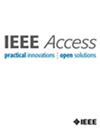具有中上衰落和合作解码与前向中继的认知无线电系统的衰落分析
IF 3.6
3区 计算机科学
Q2 COMPUTER SCIENCE, INFORMATION SYSTEMS
引用次数: 0
摘要
下一代无线通信(NextGen)的到来需要大量投资和合作研究,以满足无线通信的基本需求。因此,合作通信在克服可靠性、吞吐量和中断权衡等挑战方面发挥着至关重要的作用。我们提出了一种双传输阶段频谱共享协议,采用合作解码和前向中继技术,为主要用户和次要用户提供频谱接入。系统由主发送方 (PS)、主接收方 (PR)、副发送方 (SS) 和副接收方 (SR) 组成,分别称为 PS-SS、PS-PR、PS-SR、SS-SR 和 SS-PR。在第一传输阶段,PS 广播主信号,由 PR、SS 和 SR 接收。SS 在成功接收后重新生成主信号,将其与副信号线性组合,并将功率分数 $\epsilon $ 和 ( $1 - \epsilon $ ) 分配给主信号和副信号。然后,SS 在第二个传输阶段广播合并信号。分析表明,当 SS 在 PS 的范围内时,性能最佳的阈值。超过该阈值后,主用户的中断性能等于或超过无频谱共享的情况。辅助系统的中断性能也得到了量化。通过使用 Nakagami-m 分布推导出中断概率的闭式表达,对主用户和辅助用户的性能进行了评估。分析和模拟结果证实了该方案的有效性。本文章由计算机程序翻译,如有差异,请以英文原文为准。
Outage Analysis of a Cognitive Radio System With Nakagami-m Fading and Cooperative Decode and Forward Relaying
The advent of the next generation of wireless communication (NextGen) demands substantial investments and collaborative research for the fundamental need of wireless communications. Therefore, cooperative communication plays a vital role in overcoming challenges such as reliability, throughput, and outage trade-offs. We propose a two-transmission phase spectrum-sharing protocol, employing cooperative decode-and-forward relaying to grant spectrum access for both primary and secondary users. The system consists of a primary sender (PS), primary recipient (PR), secondary sender (SS), and secondary recipient (SR), linked as PS-SS, PS-PR, PS-SR, SS-SR, and SS-PR. In the first transmission phase, PS broadcasts the primary signal, received by PR, SS, and SR. SS regenerates the primary signal after successful reception, combining it linearly with the secondary signal, and allocating power fractions
$\epsilon $
and (
$1 - \epsilon $
) to the primary and secondary signals. SS then broadcasts the combined signal in the second transmission phase. Analysis reveals a threshold for optimal performance when SS is within range of PS. Beyond this threshold, the outage performance for the primary user equals or exceeds the case without spectrum sharing. The outage performance for the secondary system is also quantified. The performance of both the primary and secondary users is assessed by deriving a closed-form expression for the outage probability using the Nakagami-m distribution. The effectiveness of the scheme is affirmed through analytical and simulation results.
求助全文
通过发布文献求助,成功后即可免费获取论文全文。
去求助
来源期刊

IEEE Access
COMPUTER SCIENCE, INFORMATION SYSTEMSENGIN-ENGINEERING, ELECTRICAL & ELECTRONIC
CiteScore
9.80
自引率
7.70%
发文量
6673
审稿时长
6 weeks
期刊介绍:
IEEE Access® is a multidisciplinary, open access (OA), applications-oriented, all-electronic archival journal that continuously presents the results of original research or development across all of IEEE''s fields of interest.
IEEE Access will publish articles that are of high interest to readers, original, technically correct, and clearly presented. Supported by author publication charges (APC), its hallmarks are a rapid peer review and publication process with open access to all readers. Unlike IEEE''s traditional Transactions or Journals, reviews are "binary", in that reviewers will either Accept or Reject an article in the form it is submitted in order to achieve rapid turnaround. Especially encouraged are submissions on:
Multidisciplinary topics, or applications-oriented articles and negative results that do not fit within the scope of IEEE''s traditional journals.
Practical articles discussing new experiments or measurement techniques, interesting solutions to engineering.
Development of new or improved fabrication or manufacturing techniques.
Reviews or survey articles of new or evolving fields oriented to assist others in understanding the new area.
 求助内容:
求助内容: 应助结果提醒方式:
应助结果提醒方式:


